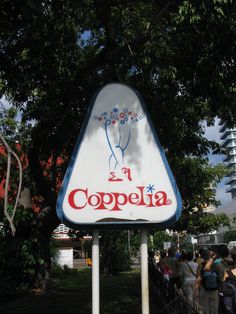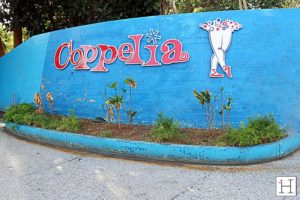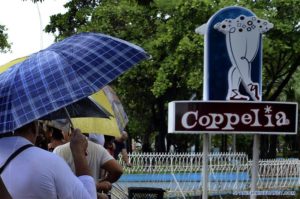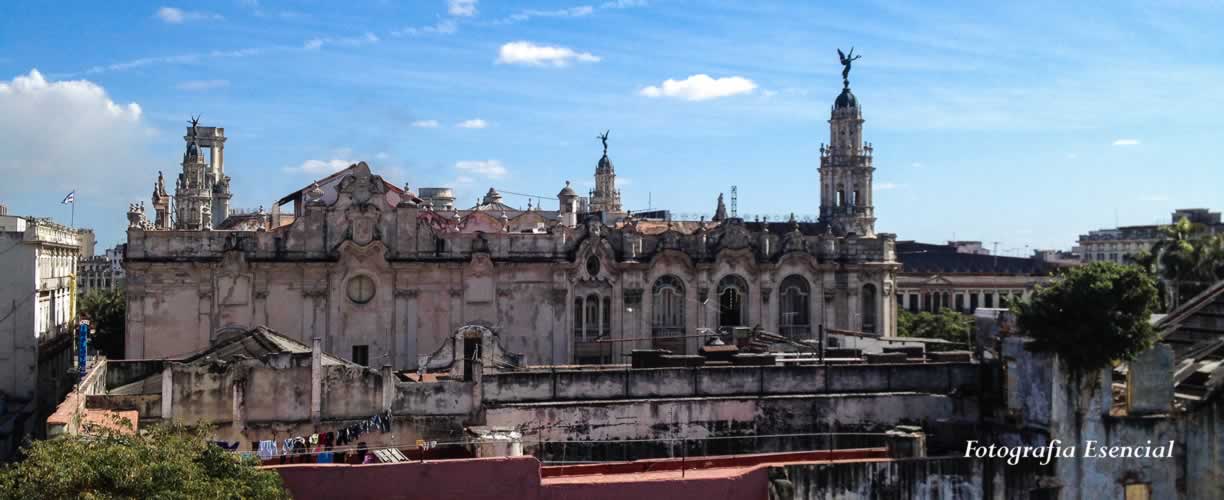 COPPELIA, ASPIRA SEGUIR SIENDO “LA CATEDRAL DEL HELADO” EN CUBA.
COPPELIA, ASPIRA SEGUIR SIENDO “LA CATEDRAL DEL HELADO” EN CUBA.
Símbolo de la ciudad y punto de reunión de muchos, Coppelia, la gigantesca heladería de La Habana, era considerada como la “catedral del helado” en Cuba. En estos días de calor y sol ardiente, miles de cubanos hacen fila frente a las cuatro entradas de la heladería más famosa de la isla, que es considerada como la “catedral del helado” en Cuba, recién remozada y con más de una decena de sabores de helado Coppelia, la marca más célebre y mejor apreciada del país.
La heladería se sitúa en uno de los sitios más céntricos de la ciudad, La Rampa, apenas a cinco cuadras del malecón, zona de constante trasiego de personas, muchas en busca de mitigar temperaturas que rondan los 35 grados Celsius.
Abierta en junio de 1966, Coppelia es una de las heladerías más grandes del mundo y su edificio fue diseñado por el prestigioso arquitecto cubano, Mario Girona (1924-2008), con notable influencia del modernismo italiano y sudamericano. En el sitio estaba desde 1886 el Hospital Reina Mercedes, demolido en 1954 con la intención de edificar otro sanatorio, pero finalmente se proyectó levantar un edificio de 50 plantas, idea que nunca se materializó.
Posteriormente, allí se erigió el parque del Instituto Nacional de la Industria Turística (INIT), un bello pabellón de promoción de la llamada industria del ocio, donde se reprodujeron pequeñas montañas, un lago artificial, un escenario flotante, surtidores de agua, cafetería, bar y un restaurante para 500 comensales.
Tras un año de exitoso funcionamiento, el parque del INIT fue desactivado y en su lugar quedó, al aprovechar algunas de sus instalaciones, el Centro Recreativo Nocturnal.
Desde su apertura, Coppelia pasó a ser un punto de atracción especial para la juventud, al imponer una tradición que aún se conserva, la de compartir mesa entre desconocidos, siempre que haya lugar libre. Buena parte del movimiento intelectual cubano tuvo y aún tiene presencia permanente en la heladería.
En el lugar eran habituales el trovador Silvio Rodríguez, los poetas Víctor Casaus y Luis Rogelio Nogueras, el salsero Juan Formell o la diva del Buena Vista Social Club, Omara Portuondo, por solo citar algunos.
Fresa y Chocolate Trailer.
La laureada película cubana “Fresa y Chocolate”, dirigida en 1993 por Tomás Gutiérrez Alea y Juan Carlos Tabío, dio realce internacional a la heladería, escenario de las primeras escenas de un filme clásico por su sensible acercamiento al complejo mundo de las relaciones interpersonales, los prejuicios y la necesidad de comunicación.
La llegada de la dura crisis económica de los 90 del pasado siglo, que en la isla denominan Período Especial, golpeó a la instalación no solo desde el punto de vista de la infraestructura, sino en los servicios y la cantidad de sabores ofertados, que descendió de manera drástica.
En abril último, la heladería fue cerrada y sometida a un profundo proceso de restauración, y de manera paralela se hizo una inversión millonaria para modernizar la fábrica de helados Coppelia, que ahora puede producir hasta 15 sabores. Los cubanos no pasaron por alto esa renovación y con la reapertura hace poco más de un mes, que coincidió con el inicio del período de vacaciones escolares, se lanzaron en masa sobre los demandados helados.
“Esta es una instalación que tiene historia de hace muchos años, que ha servido a muchas personas que vienen a enamorarse, a compartir, a degustar del sabor de un helado de alta calidad”, dijo el director de la heladería, Amaury Martínez. El directivo explicó de esa manera la constante afluencia de público que hace que cada día se atienda a más de 7.000 personas, aunque los fines de semana la cifra supera los 11.000.
La constante entrada de gente demuestra la permanencia del lugar en el gusto popular, ahora que Coppelia hace esfuerzos por recuperar su viejo lustre, pero sobre todo por seguir siendo la “catedral del helado” en Cuba.
 COPPELIA, AIM TO CONTINUE BEING “THE CATHEDRAL OF ICE CREAM” IN CUBA.
COPPELIA, AIM TO CONTINUE BEING “THE CATHEDRAL OF ICE CREAM” IN CUBA.
Symbol of the city and meeting point of many, Coppelia, the gigantic ice cream shop in Havana, was considered the “ice cream cathedral” in Cuba. In these days of heat and burning sun, thousands of Cubans line up in front of the four entrances of the most famous ice cream parlor on the island, which is considered the “ice cream cathedral” in Cuba, recently renovated and with more than a dozen flavors of Coppelia ice cream, the most famous and best appreciated brand in the country.
The ice cream shop is located in one of the most central places of the city, La Rampa, just five blocks from the boardwalk, an area of constant transfer of people, many in search of mitigating temperatures around 35 degrees Celsius.
Opened in June 1966, Coppelia is one of the largest ice cream parlors in the world and its building was designed by the prestigious Cuban architect, Mario Girona (1924-2008), with a notable influence of Italian and South American modernism. The Reina Mercedes Hospital was demolished since 1886, demolished in 1954 with the intention of building another sanatorium, but it was finally planned to build a 50-story building, an idea that never materialized.
Subsequently, there was erected the park of the National Institute of Tourism Industry (INIT), a beautiful pavilion promoting the so-called leisure industry, where small mountains were reproduced, an artificial lake, a floating stage, water pumps, cafeteria, bar and restaurant for 500 people.
After a year of successful operation, the INIT park was deactivated and in its place was, by taking advantage of some of its facilities, the Nocturnal Recreation Center.
Since its opening, Coppelia became a point of special attraction for youth, by imposing a tradition that is still preserved, that of sharing a table among strangers, whenever there is a free place. A good part of the Cuban intellectual movement had and still has a permanent presence in the ice cream shop.
In the place were the troubadour Silvio Rodríguez, the poets Víctor Casaus and Luis Rogelio Nogueras, the salsa player Juan Formell or the diva of the Buena Vista Social Club, Omara Portuondo, just to name a few.
Strawberry and Chocolate Trailer.
The laureate Cuban film “Strawberry and Chocolate”, directed in 1993 by Tomás Gutiérrez Alea and Juan Carlos Tabío, gave international enhancement to the ice cream parlor, scene of the first scenes of a classic film for its sensitive approach to the complex world of interpersonal relationships, prejudices and the need for communication.
The arrival of the hard economic crisis of the 90s of the last century, which they call the Special Period on the island, hit the installation not only from the point of view of the infrastructure but in the services and the number of flavors offered, which descended drastically.
Last April, the ice cream shop was closed and underwent a deep restoration process, and in parallel, a million-dollar investment was made to modernize the Coppelia ice cream factory, which can now produce up to 15 flavors. The Cubans did not overlook that renewal and with the reopening a little over a month ago, which coincided with the beginning of the period of school vacations, they launched themselves massively on the ice cream defendants.
“This is an installation that has a history of many years ago, which has served many people who come to fall in love, to share, to taste the taste of high-quality ice cream,” said the director of the ice cream shop, Amaury Martínez. The manager explained in this way the constant influx of public that makes every day serve more than 7,000 people, although on weekends the figure exceeds 11,000.
The constant influx of people demonstrates the permanence of the place in popular taste, now that Coppelia makes efforts to recover its old luster, but above all to remain the “ice cream cathedral” in Cuba.
Agencies/Xinhua/ Raúl Menchaca/ Internet Xinhua Photos/ Excerpts/ Extractos/ Arnoldo Varona/ www.TheCubanHistory.com
THE CUBAN HISTORY, HOLLYWOOD.
More



 < COPPELIA, Aim to continue being "The Ice Cream Cathedral" in Cuba. Photos.
< COPPELIA, Aim to continue being "The Ice Cream Cathedral" in Cuba. Photos.





